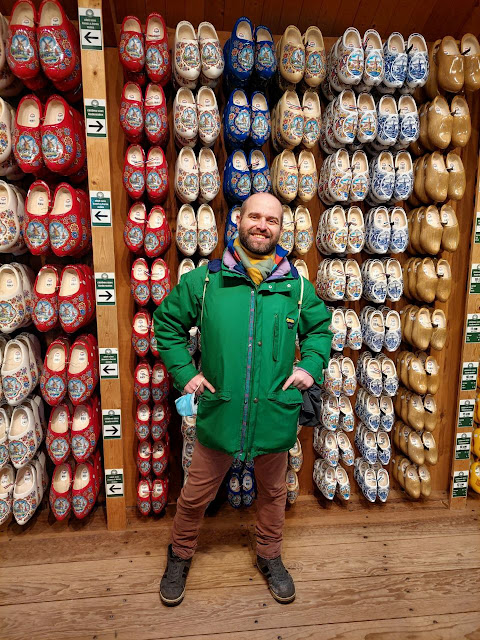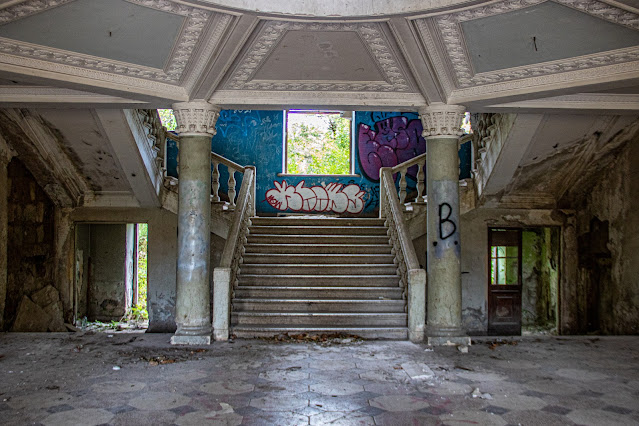Vienna
I went to Vienna in summer 2020, with
Israel these were the only two trips in that year.
I have a friend that every year comes to Budapest from Italy to visit me and she did it also in 2020, she knows quite well Budapest so we passed a few days there and then go to Vienna. Budapest and Vienna are quite close, it is around 3 hours by bus and it is a cheap trip to do.
We spent a long weekend there, for sure the city deserves more time, but because of covid restrictions and because it is close to where I live I know that I will visit it again.
The first thing that positively impressed me was the LGBTQI+ sensitivity of Vienna, the traffic light that you can see in the above picture, the pride zebra crossing, and a lot of other small things like these made me feel a nice freedom feeling.
Maria theresien Platz
Near our accommodation, in the city centre near Neubaugasse metro station, there is this large public square that host the Natural History Museum and the Art History Museum. The buildings of the two museums are identical, except for the statuary on their facades.
The monument at the centre of the square is a Maria Theresa memorial, 19 m high and 44 tons heavy bronze statue, it is a world cultural heritage. Maria Theresa was the empress of Austra from 1740 to 1780, the one and only woman in that position.
The Hofburg
It is the official residence of the Federal President of Austria, and it is the former principal imperial palace of the Habsburg dynasty. It was built in the 13th century, it served as the imperial winter residence, and Schonbrunn Palace was the summer residence. The Hofburg has been expanded over the centuries to include various residences, like the Albertina, the Imperial Chapel, the imperial library, the treasury and more. We hunted the imperial library for hours, we saw pictures of it and we wanted to visit it, the buildings are huge and it was difficult to understand where we were, we got lost but fortunately, after hours we were able to visit it, and I can say it deserves a visit.
Walking around these buildings you can see and feel how classic Vienna is, with its majesty, it is like to have a small leap in the imperial period.
This part of Vienna was interesting also because in front of the Hofburg there is the main shopping street and it is a nice place for street photography, an example is the picture of the mother and the daughter with the scooter, I took several pictures of them.
St. Stephen's Cathedral
It is one of the most recognisable symbols of Vienna and the most important religious building. St. Stephen's Cathedral is located in Stephansplatz, it was completed in 1160 in Romanesque and Gothic styles and I can say that it was witness to many important events in Habsburg and Austrian history.
I am sorry for the picture, I wasn't able to get a nice picture of the cathedral that day, there was a lot of people around it and I had the wrong lens on my camera. We didn't visit it, it wasn't possible, we just admire it from the outside, and it is really beautiful, what I remember is that in the same square there is a good bakery shop, where we ate an amazing Sacher Torte, I really recommend eating it when you are in Vienna.
Donauinsel
It is an artificial island in the Danube river, Donauinsel means Danube island. The island lies between the Danube and the parallel excavated channel new Danube, it is 21 km (13 mi) long and from 70 to 210 m (230-689 ft) wide.
The weather that day was very hot, so we decided to go there to rest a bit and catch some fresh air, it is a good place for that because the river make the air colder and there are a lot of opportunities to chill.
This place is known in Vienna as a recreation area, with bars, restaurants and nightclubs, there are also several sports opportunities and a beach. Near the metro station, there is a skate park that in that day was crowded, and I used that time to take some pictures and catch the moment while the skaters were doing their tricks.
Naschmarkt
It is Vienna's most popular market, we visited it two times, but the second time was on a bank holiday day and some stands were closed.
It is located at the Wienzeile over the Wien River, it is 1.5 km (0.93 mi) long. Naschmarkt has existed since the 16th century, the name probably came from the milk bottles that were sold, that bottles were made of ash, "asch" in german.
There are also small restaurants and bars, where you can eat traditional Viennese food but also food from around the world.
We went there not only to visit it but also to buy some gifts and food, we were able to see most of the stands but it started to rain so we stopped at a restaurant and have a break. The second time we went to buy what we didn't in the first time, but as I said it was almost close, the flea market was open and it was nice to take some pictures of the stands and the people were there, I like places like markets or bazaar, they are full of colours and traditions.
Prater
It is a large public park near the Danube, probably the most famous part of it it's the Wurstelprater, the amusement park with the Ferris wheel Wiener Riesenrad.
The name Prater derives probably from pratum (meadow) and Praetor (lawyer), possibly via prado (Spanish) or prato (Italian). The area of the Prater was first mentioned as Prato in 1162, and as Prater in 1403, referring as a small island in the Danube that gradually extended to the actual dimension.
I wanted to visit the Prater mainly because, there, a few months before Eliud Kipchoge ran a marathon in less than two hours, and I wanted to see the place where it happened.
We left the Prater for the last day of our trip, and as you can see from the pictures the day was cloudy, so it wasn't the best day to visit it, and it was quite empty, so in the amusement park, the atmosphere was a bit sad. I think it is a great place to be on hot summer days, it is really big, there are several things to do there, also a simple chill in the shadow of a tree.
Belvedere
Probably it is the most famous place in Vienna, or the most touristic, it consists of two Baroque palaces, the Upper and Lower Belvedere, and the Orangery and Palace Stables.
Between the two baroque buildings, there is a park landscape in the third district of the city.
We went there in the afternoon and we visited only the Upper Belvedere because we didn't have enough time to see everything and also because the ticket is expensive. Only entering it and walking on the park between the two Belvedere can be enough, but if you have time try to see at list what I visited. When we finished with the Upper Belvedere we sat on the stairs in front of it and relaxed watching the park and waiting for the sunset.
Hundertwasser
Friedrich Hundertwasser was an Austrian visual artist and architect, he stood out as an opponent of "straight line" and any standardization in the building design. His best-known work is the Hundertwasserhouse, a notable place of interest in Vienna. It is considered an expressionist landmark and it is located in Landstrasse district, it is one of the most visited buildings in Vienna and it is part of Austria's cultural heritage.
I didn't know about this place, we had a couple of hours free and my friend suggested going to visit it. I think that for architects it is a must-see place even if you like it or not, for sure it is really instagramable and it is worth a visit, inside the building there are some souvenir shops and don't forget to visit the toilet, it really deserves it!.
I feel the need to travel again to Vienna, I know that there are much more things to see and to know, but after this trip, I had to wait almost one year before travelling again and it was
Kyrgyzstan, so maybe soon I will be able to see what I missed that time.































This couldn't be more timely! They just announced at our local airport in Central Italy that will be a direct flight to Vienna starting next year. Thank you for the ideas of places to visit!
ReplyDeleteThank you for reading it! It's nice to know that this post is useful!
DeleteLove your posts - thanks for sharing!
ReplyDelete